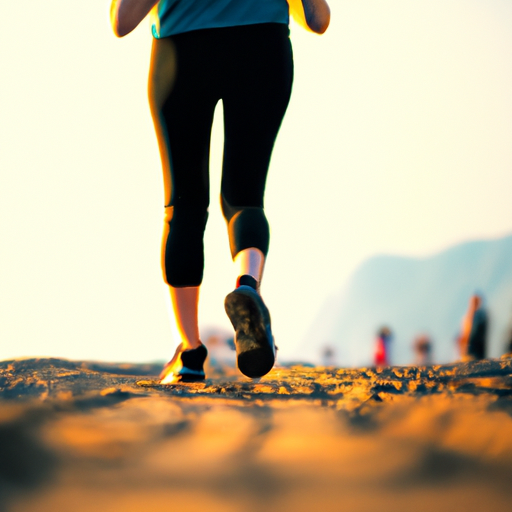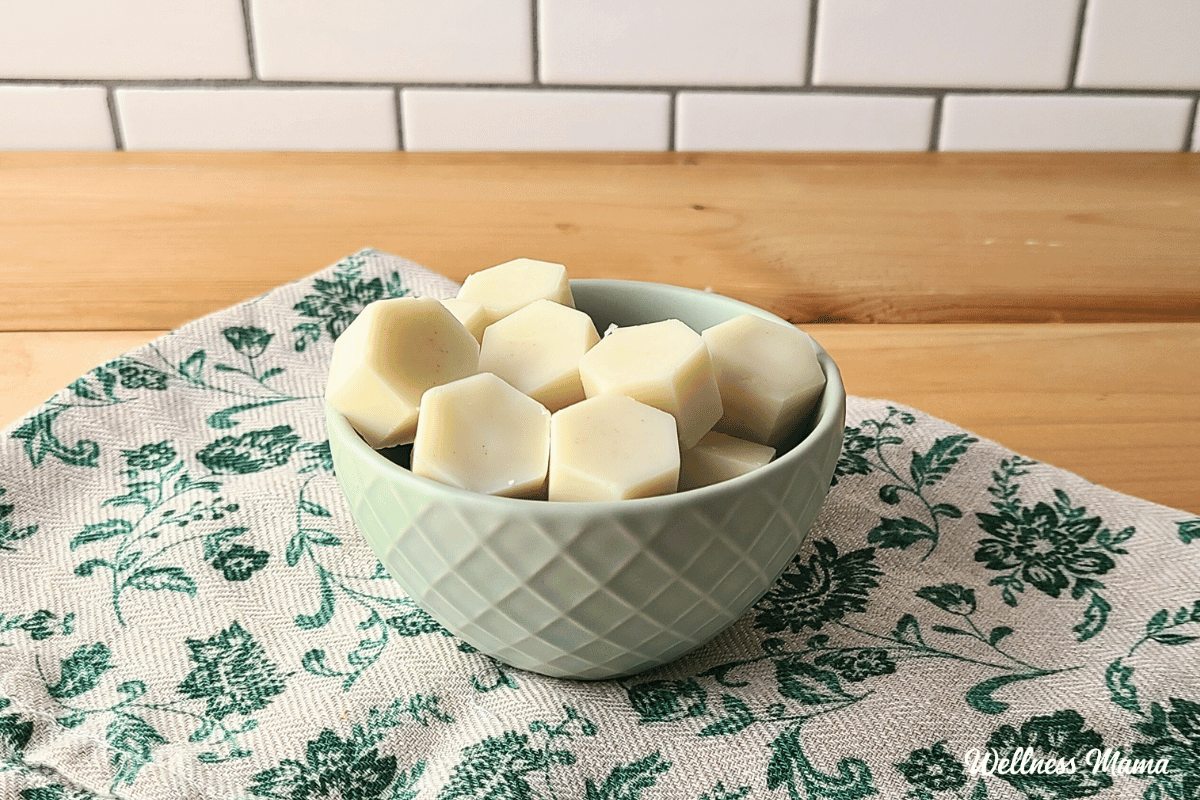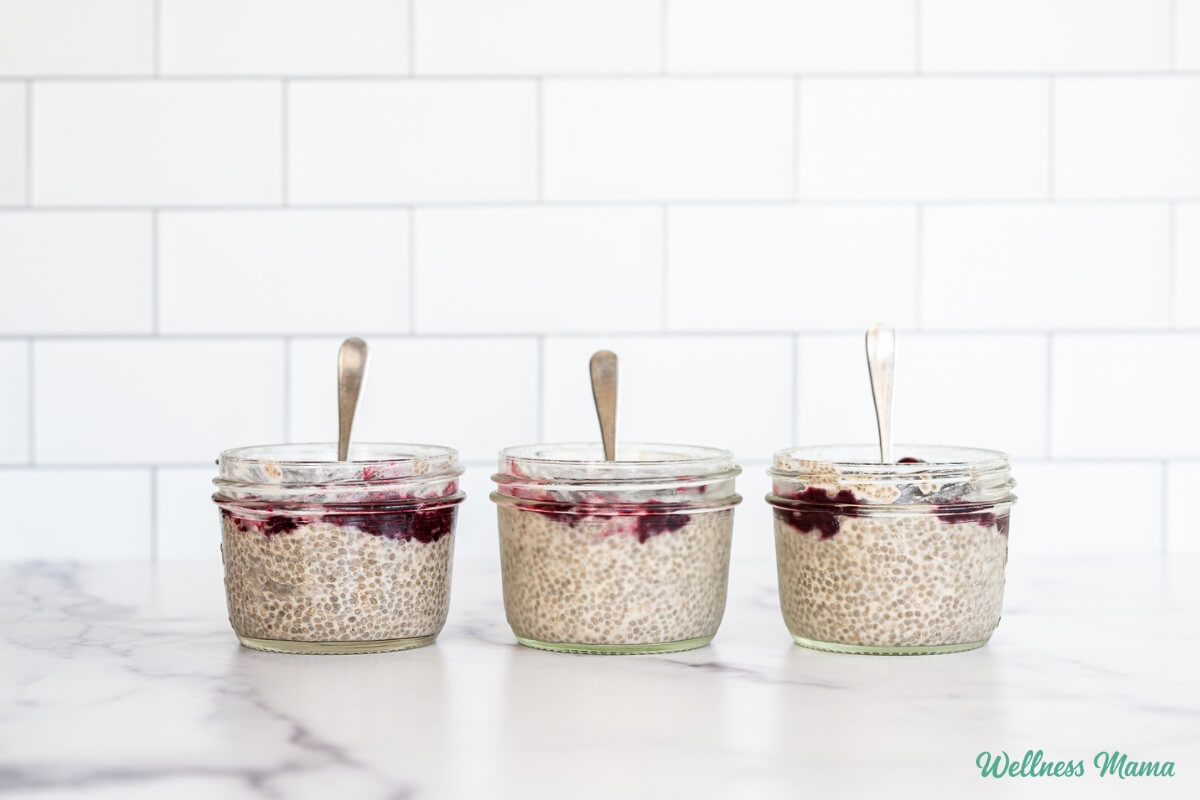The Connection Between Physical Activity

Do you ever wonder how physical activity affects your overall health and well-being? It’s something that many of us may not think about on a daily basis, but the truth is that staying active has a significant impact on our bodies and minds. In this article, we’ll delve deeper into the connection between physical activity and its benefits, so get ready to learn more about why staying active is so important.
When you engage in regular physical activity, whether it’s going for a run, playing a sport, or even just taking a walk, you’re not only working your muscles but also improving your cardiovascular health. Physical activity increases your heart rate, which in turn strengthens your heart and helps it pump blood more efficiently throughout your body. Additionally, regular physical activity can help lower your blood pressure and cholesterol levels, reducing the risk of developing heart disease.
But physical activity isn’t just good for your heart; it also plays a crucial role in maintaining a healthy weight. When you engage in activities that burn calories, such as jogging or cycling, you’re helping to keep your weight in check. In addition, physical activity increases your metabolism, meaning your body burns calories more efficiently even when you’re at rest. So if you’re looking to shed a few pounds or maintain a healthy weight, incorporating regular physical activity into your routine is essential.
Moreover, physical activity has numerous mental health benefits as well. When you exercise, your brain releases endorphins, which are chemicals that boost your mood and reduce feelings of stress and anxiety. Regular physical activity has also been linked to improved sleep quality, increased self-confidence, and even a reduced risk of developing mental health disorders like depression. So if you’re feeling down or stressed, engaging in some physical activity can be a great way to lift your spirits and improve your overall well-being.
In this article, we’ve just scratched the surface of the many benefits of physical activity. Whether it’s improving your heart health, maintaining a healthy weight, or boosting your mental well-being, staying active is essential for a happy and healthy life. So if you’re ready to learn more about how physical activity can positively impact your health, keep reading to discover the details in the upcoming sections. Physical activity is essential for maintaining a healthy lifestyle and has numerous benefits for both physical and mental health. Engaging in regular physical activity can improve cardiovascular health, help with weight management, enhance mood and mental well-being, and boost energy levels. There are various types of physical activities that individuals can incorporate into their daily routines, including aerobic exercises, strength training, flexibility exercises, and balance exercises. In this article, we will explore the benefits of physical activity, how it affects the body, its role in weight management and cardiovascular health, its impact on mental health, its importance for aging individuals and children, as well as tips for incorporating physical activity into daily life.

Benefits of Physical Activity
Improves cardiovascular health
One of the key benefits of physical activity is its positive impact on cardiovascular health. Engaging in regular aerobic exercises, such as brisk walking, jogging, swimming, or cycling, can help improve heart health by increasing heart rate and blood circulation. This, in turn, strengthens the heart muscle, improves blood flow, and reduces the risk of heart disease. Additionally, physical activity helps to lower blood pressure and cholesterol levels, further promoting cardiovascular well-being.
Helps in weight management
Physical activity plays a crucial role in weight management. It helps burn calories and promotes weight loss by increasing energy expenditure. Regular exercise also boosts metabolism, which can help individuals maintain a healthy weight. Furthermore, physical activity promotes the development of lean muscle mass, which increases the body’s ability to burn calories even at rest, supporting long-term weight management goals.
Enhances mood and mental well-being
Physical activity has a direct impact on mental health and well-being. When you engage in physical activity, whether it’s a high-intensity workout or a leisurely walk, your body releases chemicals called endorphins, which are known as natural mood boosters. These endorphins can help reduce stress and anxiety levels, improve overall mood, and increase feelings of happiness and relaxation. Regular physical activity can also help individuals manage symptoms of depression and improve cognitive function and memory.
Boosts energy levels
Feeling tired and sluggish? Physical activity can help boost your energy levels. Regular exercise improves blood circulation, which means that more oxygen and nutrients are delivered to your muscles, organs, and tissues. This increase in oxygen and nutrient supply enhances your body’s ability to produce energy, leaving you feeling more energized and alert throughout the day. Additionally, physical activity stimulates the release of serotonin, a hormone that helps regulate sleep, mood, and appetite, further contributing to increased energy levels.
Types of Physical Activities
To reap the numerous benefits of physical activity, it’s important to engage in a variety of exercises that target different aspects of fitness. Here are the different types of physical activities you can incorporate into your routine:
Aerobic exercises
Aerobic exercises, also known as cardiovascular exercises, are activities that increase your heart rate and breathing rate. These exercises improve cardiovascular fitness, help burn calories, and strengthen the heart and lungs. Some examples of aerobic exercises include brisk walking, jogging, running, swimming, dancing, cycling, and aerobics classes. Aim for at least 150 minutes of moderate-intensity aerobic activity or 75 minutes of vigorous-intensity aerobic activity per week.
Strength training
Strength training, also known as resistance training or weight lifting, involves using resistance (such as dumbbells, resistance bands, or bodyweight) to build strength, increase muscle mass, and improve overall body composition. Incorporating strength training exercises into your routine can help strengthen your muscles and bones, increase metabolism, and improve posture and balance. Aim for at least two days of strength training per week, targeting all major muscle groups.
Flexibility exercises
Flexibility exercises, also known as stretching exercises, help improve joint range of motion, muscle elasticity, and overall flexibility. These exercises can also help reduce muscle tension and improve posture. Some examples of flexibility exercises include static stretching, dynamic stretching, yoga, and Pilates. Aim to incorporate flexibility exercises into your routine at least two to three times per week, focusing on all major muscle groups.
Balance exercises
Balance exercises are essential for improving stability, coordination, and preventing falls. These exercises help strengthen the muscles that support balance, improve proprioception (the body’s awareness of its position in space), and enhance overall body control. Examples of balance exercises include standing on one leg, heel-to-toe walk, yoga poses, and Tai Chi. Aim to incorporate balance exercises into your routine at least two to three times per week.

How Physical Activity Affects the Body
Regular physical activity has numerous positive effects on the body. Here are some ways in which physical activity affects the body:
Increases heart rate and blood circulation
Engaging in physical activity increases the demand for oxygen and nutrients by the muscles. In response, the heart rate increases, pumping more blood to deliver oxygen and nutrients to the working muscles. This increased blood circulation not only helps strengthen the heart muscle but also improves overall cardiovascular health.
Stimulates muscle growth and strength
Physical activity, particularly strength training exercises, stimulates muscle growth and strength. When you perform resistance exercises, you create microscopic tears in the muscle fibers. As the body repairs these tears, the muscles become stronger and larger. Regular strength training also improves muscle endurance, allowing you to perform daily activities with ease.
Improves respiratory function
Physical activity helps improve respiratory function by increasing lung capacity and efficiency. During aerobic exercises, such as running or swimming, your breathing rate increases, which helps strengthen the muscles involved in breathing. This increased respiratory function allows for better oxygen exchange and enhanced overall lung health.
Enhances joint flexibility and mobility
Physical activity, especially flexibility exercises, helps improve joint flexibility and mobility. Regular stretching and mobility exercises help to lengthen muscles and connective tissues, reducing muscle stiffness and joint tightness. This increased flexibility enhances range of motion and reduces the risk of injuries.
Physical Activity and Weight Management
Physical activity plays a vital role in weight management. Here’s how it can help:
Burns calories and promotes weight loss
Engaging in physical activity burns calories, contributing to weight loss and weight maintenance. The more intense the activity, the more calories you burn. Cardiovascular exercises, such as running or cycling, are known for their calorie-burning benefits. However, any form of physical activity that gets you moving and increases your heart rate can contribute to calorie expenditure and weight loss.
Increases metabolism and energy expenditure
Regular physical activity, particularly strength training exercises, increases muscle mass. Muscle tissue is more metabolically active than fat tissue, meaning that it burns more calories at rest. This increase in muscle mass and metabolism helps to boost energy expenditure and can aid in weight management efforts.
Promotes the development of lean muscle mass
Strength training exercises promote the development of lean muscle mass. Unlike fat tissue, muscle tissue is denser and takes up less space, giving you a leaner and more toned appearance. Developing lean muscle mass through physical activity can help increase basal metabolic rate (the number of calories burned at rest) and support long-term weight management goals.

Mental Health Benefits of Physical Activity
Physical activity has significant mental health benefits. Here’s how it can positively impact your mental well-being:
Reduces stress and anxiety
Engaging in physical activity can help reduce stress levels and alleviate symptoms of anxiety. Physical activity stimulates the production of endorphins, which are feel-good chemicals that act as natural stress relievers. These endorphins can instantly boost your mood and help you better manage daily stressors.
Improves cognitive function and memory
Regular physical activity has been linked to improved cognitive function and memory. Exercise increases blood flow to the brain, delivering oxygen and nutrients necessary for optimal brain health. This enhanced blood flow helps improve focus, concentration, and overall cognitive performance.
Boosts self-esteem and confidence
Physical activity can boost self-esteem and confidence. Regular exercise leads to physical changes in the body, such as increased muscle tone and improved body composition, which can positively impact body image and self-perception. Additionally, achieving fitness goals and improving performance in physical activities can boost self-confidence and overall self-worth.
Helps in managing symptoms of depression
Physical activity is known to have a positive impact on managing symptoms of depression. Regular exercise promotes the release of endorphins, dopamine, and serotonin, chemicals in the brain that contribute to improved mood and well-being. Engaging in physical activity can help reduce symptoms of depression and improve overall mental health.
The Role of Physical Activity in Cardiovascular Health
Physical activity is crucial for maintaining cardiovascular health. Here’s how it can positively affect your heart health:
Lowers the risk of heart diseases
Engaging in regular physical activity significantly lowers the risk of heart diseases, including heart attacks, strokes, and coronary artery disease. Physical activity helps improve cardiovascular fitness, strengthen the heart muscle, and reduce the accumulation of plaque in the arteries. These factors contribute to better heart health and reduce the risk of heart diseases.
Improves blood pressure and cholesterol levels
Physical activity helps to regulate blood pressure and cholesterol levels. Regular exercise can lower blood pressure and reduce the risk of hypertension, a leading cause of heart diseases. Additionally, physical activity helps raise the levels of high-density lipoprotein (HDL) cholesterol, also known as “good” cholesterol, while lowering levels of low-density lipoprotein (LDL) cholesterol, known as “bad” cholesterol. Maintaining healthy blood pressure and cholesterol levels is essential for optimal cardiovascular health.
Enhances heart and lung function
Regular physical activity improves heart and lung function. Engaging in aerobic exercises, such as running or swimming, strengthens the heart muscle, improves blood flow, and increases lung capacity. This enhances the efficiency of the cardiovascular system, allowing for better oxygen delivery to the working muscles and improved overall endurance.

Physical Activity and Aging
Physical activity becomes increasingly important as we age. Here’s how it can positively impact older individuals:
Maintains bone density and reduces the risk of osteoporosis
Engaging in weight-bearing exercises, such as walking, hiking, or weightlifting, helps maintain bone density and reduces the risk of osteoporosis. As we age, our bones naturally become weaker and more prone to fractures. Regular physical activity that targets bone health can significantly reduce the risk of developing osteoporosis and improve overall bone health.
Physical activity, particularly strength training exercises, helps prevent age-related muscle loss, also known as sarcopenia. Strength training exercises stimulate muscle growth, increase muscle mass, and improve muscle strength. This helps older individuals maintain muscle mass and function, enhancing overall mobility and reducing the risk of falls and injuries.
Improves balance and reduces the risk of falls
Balance exercises, such as standing on one leg or practicing Tai Chi, help improve balance and reduce the risk of falls in older individuals. Falls are a significant concern for older adults and can lead to serious injuries. Engaging in regular physical activity that focuses on balance and stability can improve overall body control, coordination, and reduce the risk of falls.
Physical Activity for Children and Adolescents
Physical activity is crucial for the healthy growth and development of children and adolescents. Here’s how it can benefit them:
Promotes healthy growth and development
Regular physical activity supports healthy growth and development in children and adolescents. Physical activity helps build strong bones and muscles, improves cardiovascular fitness, and enhances overall physical function. Engaging in regular physical activity during growth years sets the stage for a healthier adulthood.
Reduces the risk of obesity and chronic diseases
Physical activity plays a vital role in reducing the risk of childhood obesity and chronic diseases. Regular exercise helps maintain a healthy weight, control body fat percentage, and reduce the risk of developing chronic conditions such as type 2 diabetes and cardiovascular diseases. Encouraging children and adolescents to engage in physical activity can significantly improve their long-term health outcomes.
Enhances cognitive function and academic performance
Physical activity has a positive impact on cognitive function and academic performance in children and adolescents. Regular exercise improves blood flow to the brain, which enhances concentration, memory, and overall cognitive function. Physical activity also promotes positive mood and reduces stress levels, which can help improve academic performance.

Importance of Regular Physical Activity
Regular physical activity is essential for maintaining overall health and well-being. Here’s why it should be a priority in your life:
Maintains overall health and well-being
Engaging in regular physical activity is essential for maintaining overall health and well-being. Physical activity helps reduce the risk of chronic diseases, including heart diseases, diabetes, and certain cancers. It also improves immune function, enhances sleep quality, and promotes healthy aging.
Reduces the risk of chronic diseases
Physical activity plays a significant role in reducing the risk of chronic diseases. Regular exercise helps control blood pressure, blood sugar levels, and cholesterol levels, reducing the risk of hypertension, type 2 diabetes, and cardiovascular diseases. It also improves weight management, reducing the risk of obesity and associated chronic conditions.
Improves longevity and quality of life
Regular physical activity has been linked to increased longevity and improved quality of life. Engaging in physical activity not only increases life span but also enhances the ability to perform daily activities with ease, reduces the risk of falls and injuries, and improves overall mobility and independence.
Challenges and Barriers to Physical Activity
While physical activity offers numerous benefits, individuals often face challenges and barriers when trying to incorporate it into their daily lives. Here are some common challenges and barriers to physical activity:
Lack of time and busy lifestyles
Many individuals find it challenging to prioritize physical activity due to busy lifestyles and lack of time. Between work, family responsibilities, and other commitments, finding time for exercise can be a challenge. However, making physical activity a priority and scheduling it into your daily routine can help overcome this barrier.
Lack of motivation and enjoyment
Some individuals struggle with finding motivation and enjoyment in physical activity. It’s essential to find activities that you enjoy and that align with your interests and preferences. This will increase your motivation to engage in regular physical activity and make it a more enjoyable experience.
Physical limitations or disabilities
Physical limitations or disabilities can make it challenging to engage in certain types of physical activities. However, it’s important to remember that physical activity is possible for everyone, regardless of abilities. Consult with a healthcare professional or a certified fitness trainer to find suitable activities and modifications that accommodate your physical limitations.
Environmental factors
Environmental factors, such as extreme weather conditions or lack of access to facilities or outdoor spaces, can hinder physical activity participation. However, there are always alternative options available, even if it means engaging in indoor workouts or finding ways to be active within the confines of your own home.
Tips for Incorporating Physical Activity into Daily Life
Incorporating physical activity into your daily life doesn’t have to be overwhelming. Here are some tips to help you get started:
Set realistic goals and establish a routine
Start by setting realistic goals that align with your current fitness level and lifestyle. Gradually increase the duration and intensity of your physical activity as you progress. Establish a routine by scheduling specific times for exercise to make it a consistent part of your daily life.
Find activities that you enjoy
Engaging in physical activities that you enjoy is crucial for maintaining long-term adherence. Experiment with different types of exercises, try new activities, and find what you truly enjoy doing. This will increase your motivation and make physical activity a more enjoyable experience.
Physical activity can be more fun and motivating when done with others. Invite friends, family members, or coworkers to join you for a workout or take part in group fitness classes or team sports. Socializing while being active can help you stay committed and enjoy the process.
Utilize technology and fitness apps
Take advantage of technology and fitness apps to assist you in your fitness journey. Many fitness apps offer workout programs, tracking features, and virtual classes that can be accessed from the comfort of your own home. Use these tools to stay motivated, track your progress, and make physical activity more engaging.
Physical Activity Guidelines
To achieve optimal health benefits, it’s essential to follow physical activity guidelines. Here are some general recommendations:
Recommended duration and intensity levels
The American Heart Association recommends at least 150 minutes of moderate-intensity aerobic activity or 75 minutes of vigorous-intensity aerobic activity per week, or a combination of both. Additionally, muscle-strengthening activities should be included at least two days per week. Consult with a healthcare professional or fitness expert to determine the appropriate duration and intensity levels for your specific needs and fitness goals.
Different guidelines for various age groups
Physical activity guidelines vary depending on age. For children and adolescents, it is recommended to engage in at least 60 minutes of moderate-to-vigorous physical activity every day. Older adults should aim for a combination of aerobic exercises, strength training, balance exercises, and flexibility exercises. It’s important to consult with a healthcare professional or fitness expert to determine the appropriate guidelines for your age group.
Importance of warm-up and cool-down exercises
Always remember to include warm-up and cool-down exercises as part of your physical activity routine. Warm-up exercises prepare your body for the upcoming activity by increasing blood flow to the muscles and joints. Cool-down exercises help bring your heart rate and breathing back to baseline gradually and prevent muscle soreness. Incorporating these exercises can reduce the risk of injuries and improve overall performance.
The Importance of Rest and Recovery
While physical activity is crucial for maintaining a healthy lifestyle, it’s equally important to prioritize rest and recovery. Here’s why:
Allowing the body to heal and repair
Rest and recovery are essential for allowing the body to heal and repair itself. During physical activity, muscles and tissues undergo stress and micro-tears. Rest allows the body to repair these damaged tissues and build stronger muscles. Failing to give your body adequate rest can lead to overuse injuries and hinder progress.
Preventing overuse injuries
Overtraining and inadequate rest can lead to overuse injuries, such as muscle strains, joint inflammation, and stress fractures. By incorporating rest days into your routine and listening to your body’s signals, you can prevent these injuries and promote long-term physical well-being.
Balancing exercise with proper rest and sleep
Physical activity should be balanced with proper rest and sleep. Quality sleep is essential for muscle recovery, hormone regulation, and overall health. Aim for seven to nine hours of uninterrupted sleep each night to support your body’s recovery processes and optimize your physical performance.
Conclusion
Physical activity is crucial for maintaining a healthy lifestyle and offers numerous benefits for both physical and mental health. Incorporating regular exercise into your daily life can improve cardiovascular health, support weight management efforts, enhance mood and mental well-being, and boost energy levels. Engage in a variety of physical activities that target different aspects of fitness, such as aerobic exercises, strength training, flexibility exercises, and balance exercises. Physical activity positively affects the body by increasing heart rate and blood circulation, stimulating muscle growth and strength, improving respiratory function, and enhancing joint flexibility and mobility. It plays a vital role in weight management, reducing the risk of chronic diseases, promoting the development of lean muscle mass, and improving mental health. Whether you’re young or old, physical activity is essential for maintaining overall health, improving longevity, and enjoying a higher quality of life. Incorporate physical activity into your daily routine, overcome any barriers or challenges, and prioritize rest and recovery to fully reap the benefits of this essential lifestyle component.




1 comment